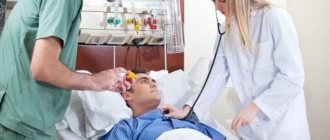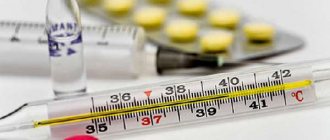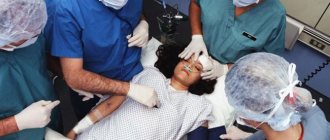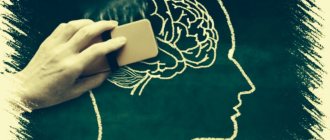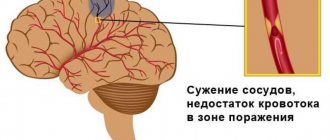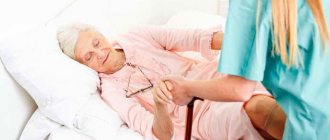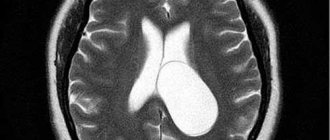Types and classification
A major stroke occurs when large arteries are damaged, including the carotid arteries - they take part in the blood supply to the cerebral hemispheres. As a result of their blockage or rupture, the power supply to one or even two hemispheres may completely stop. This leads to a sharp deterioration in nervous activity, and in the absence of medical assistance within the first few hours, to death. It is important to determine the type of stroke and its causes - these factors influence the selection of further treatment and rehabilitation after a stroke.
Ischemic major stroke
Ischemic stroke occurs in 80% of patients. Its main reason is the deterioration of blood conductivity through the vessels, while their walls remain undamaged. Ischemia is oxygen starvation of tissues, which is especially dangerous for the brain. This type of stroke can occur suddenly or develop gradually, against the background of the main predisposing factors:
- blockage of a vessel by a thrombus, including atherosclerosis and plaque formation;
- vascular spasm, as a result of which blood cannot flow freely to the brain tissues;
- a sharp decrease in blood pressure - in such conditions, a small amount of oxygen-enriched blood reaches the nervous tissues.
With an ischemic stroke, there is still a chance of full recovery. If the walls of the vessel remain intact, in the first few hours all possible measures should be taken to restore blood circulation.
Extensive hemorrhagic stroke
A hemorrhagic stroke is a stroke that occurs when an artery ruptures. Its second name is non-traumatic cerebral hemorrhage. This is a dangerous phenomenon that can be fatal even if emergency care is provided in a timely manner. An extensive hematoma deprives brain tissue of the ability to receive and transmit nerve impulses, which can result not only in deterioration of memory, attention, skills and reflexes, but also coma and complete suppression of nervous activity.
There are several types of hemorrhagic stroke, which differ in the location of the hematoma and the degree of danger for the patient.
- Intracerebral hemorrhage is the most common type. Blood enters the brain matter and damages nerve cells that are responsible for various skills and functions in the human body. Risks to the patient's life are present, but they are minimal compared to other types of hemorrhagic stroke. The main causes are hypertension (high blood pressure), atherosclerosis and thrombosis. P
- Subarachnoid hemorrhage is a pathological condition in which blood enters the subarachnoid space, between the membranes of the brain. It often occurs spontaneously and can be fatal, even with prompt medical attention. Among the causes of subarachnoid hemorrhage, in addition to hypertensive crisis, are smoking, excess weight and alcohol abuse - all these factors lead to weakness of the vascular walls.
The danger of hemorrhagic stroke is that not every patient is able to fully restore lost skills. Even if all the doctor’s recommendations are followed, the nerve tissues undergo necrosis and cannot perform the function of transmitting nerve impulses.
Brainstem stroke
Both ischemic and hemorrhagic strokes can be located in the brainstem center. Here are vital centers that are involved in the regulation of breathing, swallowing, and heart rate. If blood enters this area, it can be instantly fatal due to the cessation of breathing and heartbeat.
Main reasons
A major stroke does not occur out of nowhere; this disease is always provoked by some reason. Depending on this, an ischemic or hemorrhagic major stroke occurs. For example, in the first case, the cause may be a spasm of the carotid and vertebral arteries, blockage of a large vessel with a blood clot. In the case of hemorrhagic stroke, the disease can occur due to high blood pressure (blood pressure), physical or mental stress, and so on. The types of stroke will be discussed in more detail below.
0
Causes of hemorrhage
But there are several common precipitating factors that can cause both ischemic and hemorrhagic major stroke of the brain:
- obesity;
- diabetes;
- inactive lifestyle;
- cardiac dysfunction;
- atherosclerosis;
- hypertension;
- high blood cholesterol levels;
- smoking, drug and alcohol use.
In most cases, the prevention of any stroke is based on compliance with the principles of a healthy lifestyle (healthy lifestyle). Therefore, if a person cares about his health, then he should lead an active lifestyle, give up bad habits, and as he gets older, see a doctor.
Causes and risk factors
A major stroke can happen suddenly, but in some cases symptoms worsen over several hours. An attack can occur in any person, regardless of gender and age. However, there are a number of predisposing factors that reduce the strength and elasticity of the vascular walls, thereby increasing the likelihood of developing a stroke. These include:
- old age (over 50 years) - over time it is worth paying more attention to proper rest, proper nutrition and physical activity;
- chronic hypertension - patients are advised to monitor their well-being and regularly measure blood pressure;
- any heart disease - if it worsens, there is a risk of increased or decreased pressure, deterioration in the quality of vascular walls, various types of arrhythmia (regular examinations are required);
- ischemic attacks - often occur as precursors of a stroke or heart attack;
- type and schedule of work, including high levels of nervous tension, night shifts and hazardous working conditions;
- bad habits - smoking reduces the strength and elasticity of blood vessels, causing surges in blood pressure;
- overweight;
- vascular diseases, including stenosis (narrowing) of the arteries that supply the brain;
- hereditary predisposition - a history of stroke in relatives.
To reduce the likelihood of a major stroke, doctors at the Clinical Brain Institute recommend undergoing regular examinations for any pathologies of the heart and blood vessels, as well as in old age. It is also important to adhere to a healthy lifestyle, choose proper nutrition and perform light physical activity. Fatty foods of animal origin are the main source of cholesterol. It accumulates on the vascular walls and can form plaques that narrow the lumen of the arteries.
Another reason for major strokes and complications after them is the lack of early diagnosis and timely treatment. The most effective period during which it is important to see a doctor is the first two hours. The Clinical Brain Institute has the necessary equipment, and specialists have extensive experience in treating strokes of any type, which guarantees maximum chances for a successful recovery.
Consequences
The consequences of a major stroke are not just serious, but truly dangerous. Experts point out that most of them will not be able to recover in the subsequent period of life.
Possible consequences include:
- muscle hypertonicity and lack of ability to control many movements;
- mental disorders;
- visual impairment of greater or lesser severity;
- the appearance of auditory hallucinations up to complete hearing loss;
- serious speech disorders;
- paralysis of individual areas or the entire body;
- destructive processes in the brain that affect human intelligence;
- lost coordination;
- memory problems;
- loss of learning abilities.
It is impossible to say in advance what the consequences of a major stroke will be in a particular case. Its echoes will be different depending on which areas are affected and which hemisphere of the brain they belong to. Often, when the functions of one of the brain hemispheres fade, the work of the second is activated.
As soon as it is clear which areas are damaged, experts make predictions regarding the future existence of humans.
Left-sided injury
The left hemisphere of the brain itself is responsible for the entire left side of the body, as well as logic, analytical and verbal abilities. The following problems are typical for a stroke of the left hemisphere:
- blurred vision in the right eye;
- difficulties with reading and writing;
- problems with remembering events, as well as letter and number symbols;
- mental problems;
- loss of sensation on the right side of the body, which can result in paresis, paralysis;
- speech disappears or becomes incoherent;
- lack of analysis of incoming information, inability to form logical chains;
- the sequence of habitual actions is disrupted.
Experts say that recovery from a major stroke affecting the left side of the brain is easier than recovery from damage to the right hemisphere of the brain. Against the background of comprehensive rehabilitation, many functions partially return over time.
Right-sided lesion
The right hemisphere is responsible for the entire left side of the body, as well as for the process of thinking and remembering images, and the perception of information in general.
For this reason, a major stroke of the right hemisphere can have the following consequences:
- memory problems;
- lack of understanding of people's emotions;
- difficulty in spatial orientation;
- loss of sensation on the right, including cuts and paralysis;
- difficulty recognizing faces;
- the emotional state becomes inadequate.
It has been noticed that when the brain is damaged on the left side, the emotional and mental components are especially disturbed. But in this case, recovery processes also proceed faster, especially those related to motor functions.
Clinical picture
A major stroke occurs with damage to a large area of the brain. The clinical picture is pronounced, and the damage poses a danger to the patient’s life. It is important to seek emergency help if the victim exhibits the following symptoms:
- a sharp decrease in hearing and vision, impaired coordination of movements, inability to concentrate;
- acute headache, dizziness;
- nausea and vomiting;
- redness of the skin and mucous membranes or their pallor;
- decreased skin sensitivity, often on one side of the face or torso, muscle paralysis;
- the appearance of memory lapses;
- fainting.
With a major stroke, there is still a risk of developing coma. This is a condition in which the victim does not respond to any external stimuli, but his breathing and heartbeat continue. The coma can last for a long time, and the chances of further recovery depend on this.
Prognosis and possible complications
The prognosis of the disease depends on the severity of brain damage, the speed of first aid and the form of pathology. When coma develops, the prognosis is unfavorable: death occurs in 80% of patients in the first weeks after a stroke. While maintaining consciousness, 50% of patients remain disabled.
Complications: impaired motor activity (unilateral or complete paralysis), memory loss, frequent depression, apathy. The patient does not recognize his relatives, does not remember many facts and events, is unable to make adequate decisions and evaluate what is happening around him. In 90% of cases, there is acute impairment of speech, vision and concentration.
Major stroke survivors require ongoing care and assistance. However, with rehabilitation in specialized institutions, it is possible to restore some functions and improve the general condition.
Test for rapid diagnosis of major stroke
At home, you can identify the first signs of cerebrovascular accident and prevent the development of a major stroke. They can appear several hours before the attack, and it is important to distinguish them from the normal state. The patient may not understand the danger of what is happening and may be in good health, so primary diagnosis is the task of those around him. Doctors at the Clinical Institute of the Brain offer to familiarize yourself with simple tests that should be performed immediately if you suspect a stroke - they will help you seek medical help early and increase your chances of a full recovery.
- The first way to detect a stroke is to ask the person to smile. When cerebral circulation is impaired, one of the corners of the mouth remains drooping.
- The second way is to raise both arms in front of you and hold them for a few seconds. If normally this exercise does not cause difficulties, then during a stroke one arm either does not rise or immediately falls down.
- The third way is to ask to repeat a simple sentence. The person's speech may become unintelligible. You can also ask simple questions about the location of the victim, his name and date - he will not be able to give a clear answer to them.
- The fourth way is to direct the light source into the eyes. During a stroke, one of the pupils does not respond to light, while the other will constrict and then dilate in less intense light.
It is important to understand that not all the first signs of a stroke may appear in one person. If at least one of the points coincides, it is important to seek emergency medical help. At an early stage, there is a possibility of completely preserving brain functions and not losing nerve connections.
What are the chances of life with this disease?
With a major stroke, no specialist will assess the patient’s chances of life in advance. They are formed based on the following factors and circumstances:
- the patient has a history of various chronic diseases - the more of them, the less the chance of a positive outcome;
- the location of the hemorrhage, if we are talking about a hemorrhagic stroke - minimal chances of survival in cases of intraventricular as well as intracerebral hemorrhages;
- volume of hemorrhage;
- how quickly medical care was provided when the condition developed;
- a history of transient or acute disturbances in the blood supply to the brain - if atrophic changes have already begun in the vessels of this area, then therapy carried out using special medications will be ineffective;
- type of stroke - the hemorrhagic version leaves less chance of survival compared to the ischemic one;
- the number of damaged areas of the brain, especially those that are responsible for the life support of the human body;
- size and type of damaged vessels - the larger the artery, the more difficult the recovery;
- the person’s condition – the deeper the coma, the worse the prognosis; only in exceptional cases does a person retain consciousness;
- possible development of complications, including swelling of the brain, which sharply reduces the likelihood of a positive outcome;
- the presence of additional injuries due to loss of consciousness;
- equipping the medical institution with the necessary equipment and drugs.
The more aggravating factors among those listed, the less chance of a positive outcome. In any case, the chances of further continuation of life in the event of a stroke will be higher the earlier the condition is noticed and qualified assistance is provided.
On average, according to statistics, mortality rates in the case of a major stroke are as follows:
- the first few days - about 25%;
- first month – about 35%;
- first year – about 55%.
This is average data. Thus, against the background of hemorrhagic stroke, mortality increases to 80%. If the condition develops again, the chance of survival drops sharply to 10%. If several main parts of the brain are affected in the affected area, then 95% of patients die within the first hours. Another 5% remain in a vegetative or comatose state.
Even with good recovery of the body, the chance of another stroke in the first year remains high – up to 25%. The highest likelihood of relatively complete recovery is in people under 45 years of age who have not previously had problems with the heart and blood vessels.
Diagnostic and treatment methods
Treatment tactics depend on the type of major stroke, the patient’s age, concomitant diseases and other factors. With the hemorrhagic type, it is important to eliminate the source of bleeding, and some patients may require surgery to remove the hematoma or aneurysm. For ischemic stroke, therapy is carried out in several directions:
- correction of breathing and heartbeat;
- elimination and prevention of brain swelling;
- thinning the blood and preventing the formation of blood clots;
- symptomatic treatment aimed at relieving seizures, fever and other clinical signs.
The Clinical Institute of the Brain has all the necessary conditions for the treatment and rehabilitation of patients with strokes. At the first stage, all procedures must be carried out in a hospital, under round-the-clock supervision of doctors. In addition, in the first weeks the likelihood of a second attack is increased, and it is important not to miss its first symptoms. After complete stabilization, treatment continues at home, with mandatory examinations and constant monitoring of the patient’s condition.
Features of treatment
Treatment of pathology caused by blockage of a blood vessel in the brain by a blood clot is based on the use of a number of medications. Drug therapy for stroke includes:
- thrombolytics and anticoagulants;
- nootropic drugs;
- vitamins.
Thrombolytics thin the blood, speed up the dissolution of blood clots and the transport of oxygen to the brain. Nootropic drugs strengthen neural connections and normalize blood circulation in the affected hemisphere of the brain. Taking vitamins in the post-stroke period helps strengthen the central nervous system.
Recovery after a major stroke
An important stage is the restoration of skills lost after a stroke. These can include the simplest functions, including speech, writing, and self-service in everyday life. A comprehensive program may include several stages:
- motor rehabilitation, development of damaged limbs, development of fine motor skills;
- speech, including regular classes with a speech therapist;
- physiotherapy is a set of techniques to improve blood circulation and improve brain nutrition.
The Clinical Brain Institute offers individual treatment and recovery programs after a major stroke. Here you have the opportunity to undergo a full examination and rehabilitation in a hospital setting, and then undergo examinations and attend useful procedures (physical therapy, hardware treatment, electrical and magnetic stimulation). A neuropsychologist, speech therapist, massage and physical education specialists work at the Clinical Institute of the Brain. However, exercises at home also play an important role in rehabilitation and should be performed by the patient independently.
Clinical Brain Institute Rating: 4/5 — 7 votes
Share article on social networks
Treatment
Treatment of a major stroke takes place in a hospital. The patient is placed in the intensive care unit or intensive care unit. To maintain normal water-salt balance, the required amount of fluid and electrolytes is administered intravenously.
Drug therapy includes taking antithrombotic, hormonal, vasodilating and vasoactive drugs, as well as circulatory and respiratory stimulants, antioxidants and neurotrophics. Immediately after admission to the hospital, the patient is given intra-arterial lytic mixtures. Hypertonic solutions and diuretics are used to relieve cerebral edema.
In case of hemorrhagic stroke, it is necessary to increase blood clotting. In this case, medications are prescribed that lower blood pressure, diuretics and medications to maintain normal heart function. In difficult cases, neurosurgery is performed to eliminate bleeding.
The patient remains in a supine position for a long time. It is important to take the necessary measures to prevent the formation of bedsores, urinary tract infections and congestive pneumonia. For this purpose, the patient is turned over on his side every day, the chest is massaged and the necessary hygienic procedures are carried out.
If the swallowing process is impaired, nutrition is provided through a tube. If the patient can swallow on his own, he is fed through a sippy cup or spoon. The diet should be dominated by meat and vegetable broths, porridges, pureed meat and fish dishes and dairy products (cottage cheese and milk).
Programs:
Assessment of rehabilitation potential
Movement restoration
Rehabilitation after stroke
Restoration of cognitive functions
Early (resuscitation) rehabilitation
Coma state during stroke
Coma is a kind of borderline state when the human body experiences a decline in basic functions in terms of life support. This is a common consequence of a major stroke. It is expressed in the following reactions:
- soft tissues of the body lose their sensitivity;
- there is no control over the basic processes in terms of life;
- the pupil does not react at all to exposure to light;
- the person seems to fall into a deep sleep.
Coma itself is a dangerous condition. Due to the fact that it assumes an almost zero degree of brain activity, experts cannot assess the course of recovery processes in the body and their dynamics.
If brain cells gradually die without being restored, a person’s ability to exist independently will gradually be lost.
Modern statistics are such that most cases of coma that develop as a result of a stroke are fatal.
Post-stroke coma: are there any chances of survival?
Stroke (ischemic or hemorrhagic) occurs in patients when blood vessels in the brain rupture. The reason for this can be many conditions - high blood pressure, atherosclerosis, intoxication, blood diseases. The statistics are disappointing - over 50% of cases end in cardiac arrest. Another unfavorable outcome of the disease is apoplexy coma.
An extremely severe and life-threatening type of stroke is hemorrhagic. Lethal outcome was observed in 90%. And those patients who “pull out” will remain disabled forever. It is with this course of stroke that clinical coma often occurs.
Coma after a stroke is an unconscious state of the patient in which the functions of the central nervous system and physiological systems are disrupted. It is difficult to make any predictions with such a development of stroke - much depends on the degree of coma and the state of the person’s body.
Symptoms and course of post-stroke coma
Coma translated from ancient Greek means “sleep”. It looks like this – the man is sleeping peacefully. It’s just impossible to wake up a patient who has fallen into such a state. Without reacting to the life around him, he remains alive - his organs continue (sometimes with the help of devices) to function. But is this life?
A man in a deep coma:
- constantly in an unconscious state;
- defecates spontaneously;
- loses the ability to maintain the sleep/wake cycle;
- does not respond to stimuli from the external environment (sounds, pain, touch, light).
Coma during a stroke passes differently for each patient - some are connected to machines, while others even retain swallowing reflexes, which allows them to do without tube feeding. Some patients react to bright light, make spontaneous movements, grimace or laugh. But these factors do not prove that a person has regained consciousness - he does not speak, does not hear and does not understand.
Coma can occur quickly - in the first hours of stroke development. But it happens (especially with ischemic stroke) that a coma can be predicted by a number of symptoms:
- dizziness;
- visual impairment;
- unusual drowsiness;
- confusion;
- bouts of yawning;
- severe pain in the head;
- numbness of the limbs;
- paralysis of limbs.
If you promptly respond to warning signs of cerebral hemorrhage and coma, the patient has a chance to survive.
Degrees of post-stroke coma
Coma after a stroke usually lasts from 2 hours to 10 days. In medical practice, there were cases when a patient, after a blow, remained in a comatose state for several months, and even years. No specialist can give accurate forecasts of exactly how long it will last.
The longer the coma continues, the more difficult it is for the patient to recover. In most cases, a person remains disabled forever - many vital functions of the body never return.
Coma is characterized by a staged process:
- 1st degree (pre-coma). The patient is still conscious, reflex functions are preserved. There is some retardation in movements, loss of muscle tone, and weakening of skin reflexes. It is important to “see” the beginning of the development of pathology and begin treatment, because then it will be too late.
- 2nd degree. The patient falls into deep sleep. He does not react to external stimuli and pain, there are no physiological reactions. Breathing may become intermittent and noisy, and unconscious contractions of the muscles of the limbs often appear.
- 3rd degree. This degree of coma is most often caused by a major stroke. The patient's consciousness is completely absent, there are no physiological reactions to stimuli and muscle contractions. Blood pressure levels and body temperature drop.
- 4th degree. Such a development of stroke is incompatible with the patient’s life. In this case, there is even no spontaneous breathing - the patient is on life support devices. Blood pressure decreases, hypothermia appears.
The victim now needs special care. And even if he doesn’t feel or hear, doesn’t say anything, he still needs food. Throughout the comatose state, the patient is under daily medical supervision. The specialist, depending on the degree of brain damage, prescribes treatment that will support the patient’s life. It is mandatory to take measures to prevent bedsores.
What are the prognosis for returning to life?
It is difficult to make a prognosis for the survival of a person who has fallen into a coma. This depends on many factors:
- severity of coma;
- degree of brain damage;
- the reasons that led to the stroke;
- the place where the stroke occurred;
- efficiency of treatment measures.
In most cases, the prognosis is disappointing - there is little chance that the patient will emerge from the state of apoplexy coma. Stages 3 and 4 are especially dangerous.
Disorders of brain activity in some patients lead to a vegetative state. Only in rare cases is this condition transient, but doctors recommend fighting to the last for a person’s recovery. Wait and hope is what the relatives can do. And if a person “wake up”, then many months and years of struggle for survival lie ahead.
Maximum mortality after a major stroke occurs 1-3 days after the onset of severe coma. The reason for this is swelling of the brain, its destruction or compression of important nerve centers. The following factors increase the lethal outcome in a comatose state:
- “sleep” occurred after a second stroke;
- lack of physiological reactions;
- patient age over 70 years;
- serum creatinine in the blood decreases to 1.5 mg/dl;
- tomography shows extensive disturbances in brain activity;
- brain stem dysfunction.
Relatives of the victim often prepare for the worst. But there is still room for miracles in life - the patient comes out of a coma. In medical practice, there were cases when, even after several years of “sleep,” the patient opened his eyes.
Coming out of a coma
It is only in films that they show that a coma during a stroke ends with the patient’s instant awakening, when after a couple of days he is already living a full life. In fact, the comatose state is interrupted slowly. Weeks pass before the patient shows signs of life.
Coming out of a coma takes place in several stages:
- A swallowing reflex appears, muscles and skin begin to react to external influences, the patient can move his fingers. If such signs appear, the doctor gives a positive prognosis.
- The person regains consciousness, and a little later speech returns. During this period, the patient may experience delusions and hallucinations.
When the person regains consciousness, the tomography will clearly show which areas of the brain were affected by the stroke. This makes it easier to choose a technique for further rehabilitation of the patient.
The victim will not be able to live his former life, active and fulfilling, even years after the coma. The rehabilitation period is very long and painful, both for the patient and for his relatives. Both motor and mental activity will have to be restored. Many patients learn to eat, go to the toilet and speak from scratch; this is a very difficult period.
The patient’s recovery depends largely on him alone. Every day he will have to strain all his willpower to learn to live again, getting used to his condition.


